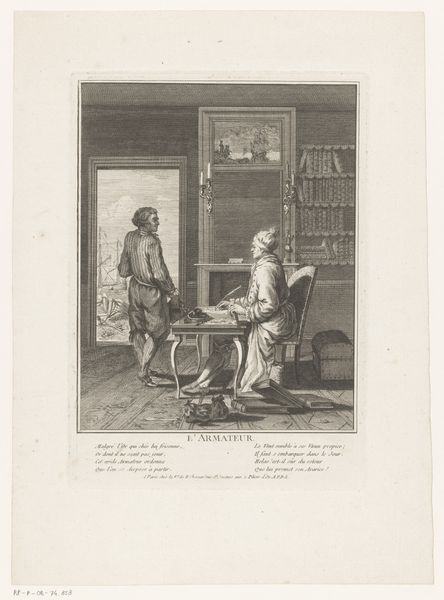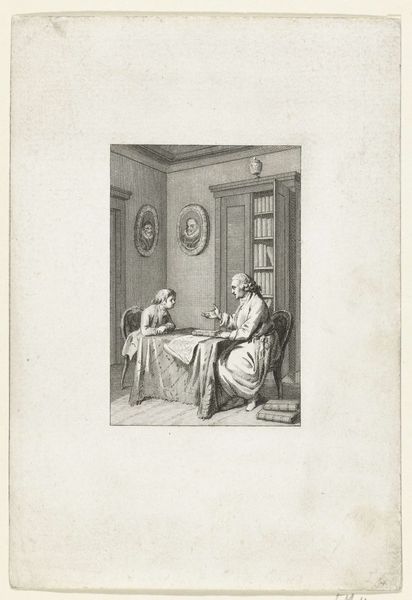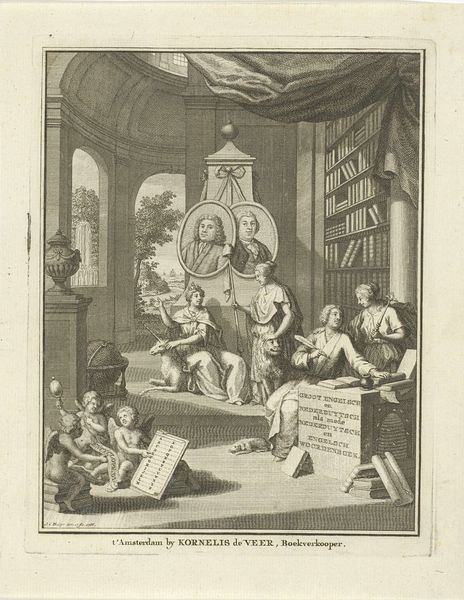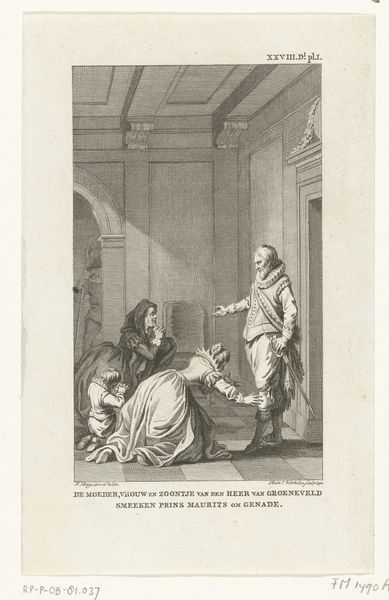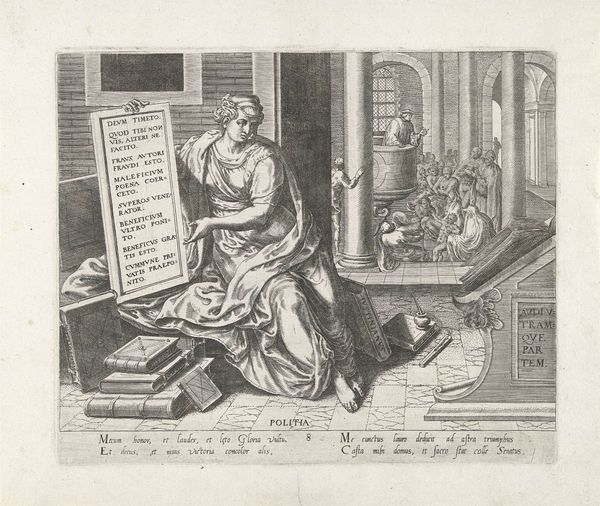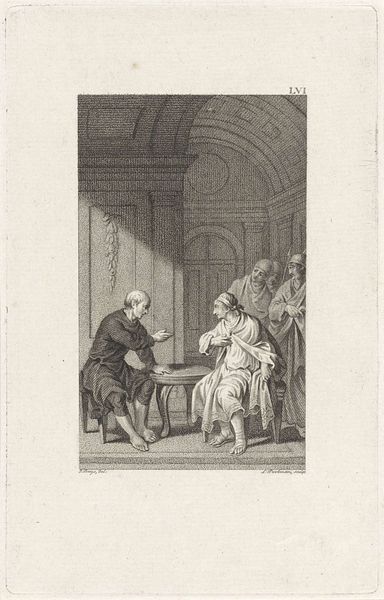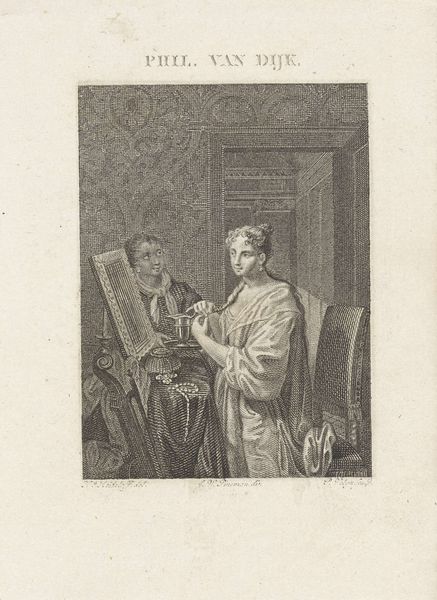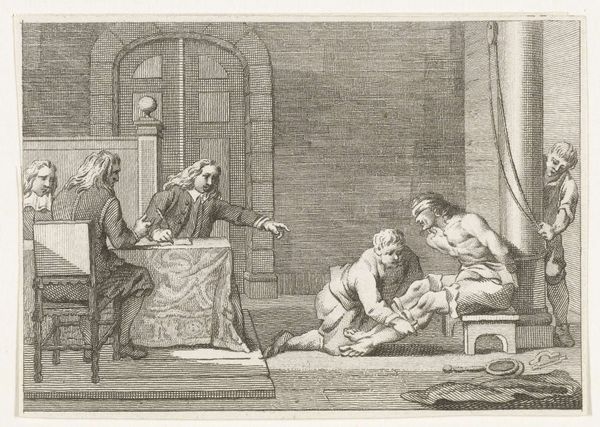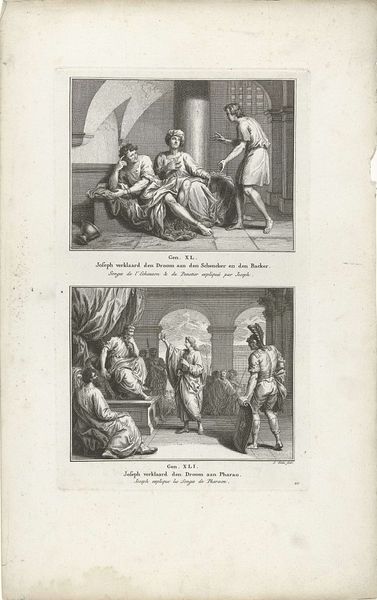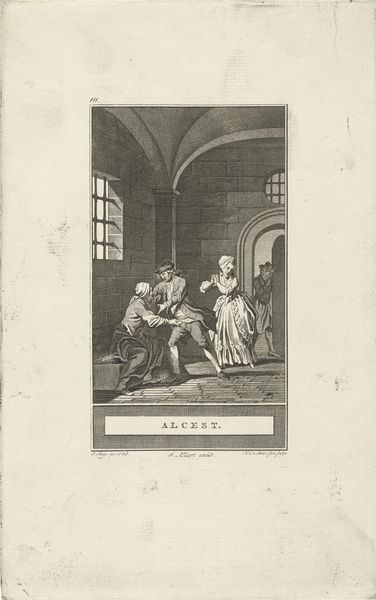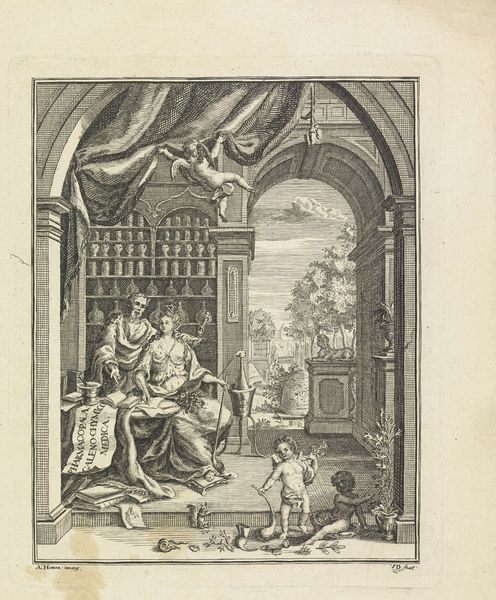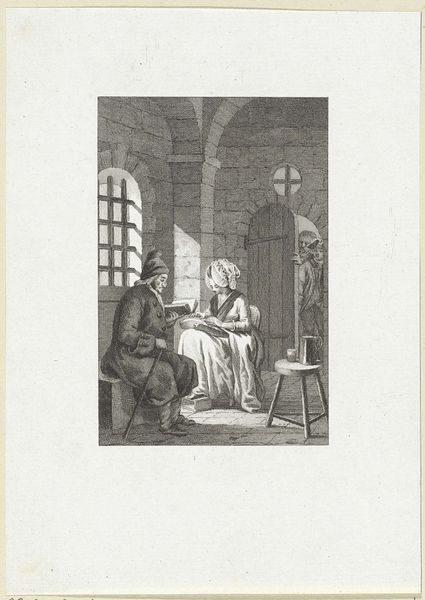
print, engraving
#
baroque
# print
#
old engraving style
#
figuration
#
history-painting
#
engraving
Dimensions: height 181 mm, width 142 mm
Copyright: Rijks Museum: Open Domain
Curator: Here we have an engraving by Joseph Mulder from 1686, currently housed in the Rijksmuseum. The title is "Jakob Böhme brengt de pantoffel van Richter terug," or "Jakob Böhme returns Richter's slipper." It depicts two men in a room with books. Editor: My immediate impression is of awkward reverence. The almost comic positioning of the figure kneeling suggests the physical discomfort of humility, especially when contrasted with the rather calm posture of the seated man. Curator: It certainly portrays a power dynamic. Joseph Mulder created this image well after the death of Jakob Böhme, so it comes with its own layer of historical interpretation. We have to remember the public role of these types of imagery. Editor: Agreed. You can practically feel the labor and the materials used to construct the setting and even the clothing represented here, down to the way light catches on the subject's sleeves and highlights how such devotional images circulated. It makes me wonder, what kind of ink was used to make this? Who made the paper? Curator: The symbolism is interesting here. The books visible on the shelf signal learning and religious study. The single slipper creates a clear message. There's a level of submission and deference at play. Consider how this type of figuration can shape popular understanding. Editor: And think about the work involved! Creating something this intricate with simple tools and materials to carry that devotional symbolism through mass production raises important questions about value. Curator: Looking closely, this engraving acts as a window into 17th-century social values and the perception of spiritual figures. It serves as both a historical document and an artistic expression, reflective of institutional expectations. Editor: Well, looking at it from the standpoint of materiality makes you think about the labor needed to both create and then perpetuate a story. Curator: It does provide a glimpse into the art and politics of imagery of the era. Editor: It provides food for thought.
Comments
No comments
Be the first to comment and join the conversation on the ultimate creative platform.
